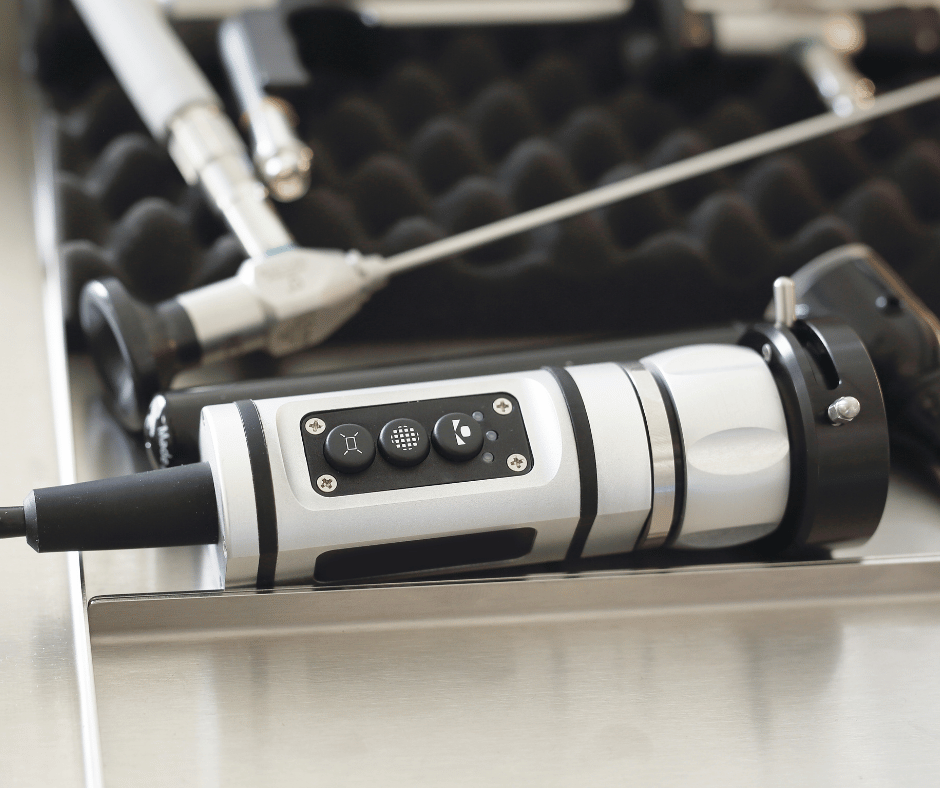Endoscopes are indispensable tools in modern medicine, allowing healthcare professionals to diagnose and treat conditions within the body with minimal invasiveness. With the recent advancements in medical technology, the range of endoscopic equipment has expanded significantly. This article provides an overview of the types of endoscopes, their applications, and the regulatory requirements for their classification and grouping within the Colombian healthcare system.
Types of Endoscopes
Endoscopes can have a diverse array of categorization methods. In general, categorization based on design and application area are the most common:
By Design:
- Flexible endoscopes: this kind of endoscope is designed with a flexible, tube-like structure that allows them to navigate the body’s natural curves and bends. They are typically made from a combination of fiber-optic bundles and advanced materials that provide flexibility and durability. The distal end (tip) of a flexible endoscope is often equipped with a camera and light source.
- Rigid Endoscopes: this type of endoscope has a straight, inflexible tube made from metal or other rigid materials. The distal end houses the optical system and light source. Unlike flexible endoscopes, rigid endoscopes provide a direct line of sight and are typically used in procedures where the path to the area of interest is straight and accessible.
By Application Area:
- Gastroenterology
- Gastroscopes: Used for examining the upper gastrointestinal tract, including the esophagus, stomach, and duodenum.
- Colonoscopes: Employed for visualizing the colon and rectum, crucial for colorectal cancer screening and diagnosing inflammatory bowel disease.
- Enteroscopes: Designed for inspecting the small intestine, often used to diagnose conditions like Crohn’s disease and small bowel tumors.
- Pulmonology
- Bronchoscopes: Used to inspect the airways and lungs, aiding in the diagnosis of lung cancer, infections, and interstitial lung disease.
- Otolaryngology
- Nasopharyngoscopes: Employed to examine the nasal passages and pharynx, useful in diagnosing sinusitis, nasal polyps, and tumors.
- Laryngoscopes: Used to examine the larynx and vocal cords, helping diagnose and treat conditions such as vocal cord nodules, tumors, and voice disorders.
- Urology
- Cystoscopes: Utilized to examine the bladder and urethra, helping diagnose and treat conditions like bladder tumors, urinary tract infections, and kidney stones.
- Ureteroscopes: Used to examine the ureters and kidneys, particularly for the diagnosis and removal of kidney stones.
- Gynecology
- Hysteroscopes: Employed for inspecting the uterine cavity, aiding in the diagnosis and treatment of uterine abnormalities such as fibroids, polyps, and abnormal bleeding.
- Orthopedics
- Arthroscopes: Designed for inspecting and treating joints such as the knee, shoulder, and elbow. They are essential for diagnosing and repairing torn ligaments, cartilage damage, and other joint issues.
Classification and Grouping of Endoscopes Guidelines
Endoscopes mentioned in the previous section, typically fall under Class IIa medical devices within the Colombian regulatory framework.
Our Classification and Grouping Ultimate Guide specifies the fundamental requirements for integrating multiple devices into one registration. The following criteria apply to endoscope grouping:
- Same manufacturer
- Same device classification
- Same distinctive denomination (commercial name)
- Same intended use (i.e.: although both cystoscopes and ureteroscopes are used in urology, they need to be registered separately)
Regarding accessories, typical cleaning accessories (like cleaning brushes and suction adapters) alongside carrying cases are not considered medical devices by themselves, and as such, can be included within the endoscope sanitary registration. However, additional elements such as tissue retractor systems guide wires or suction needles, to name a few examples, that are considered medical devices by themselves, will need a separate sanitary registration.
If you have any inquiries about the registration of endoscopes, or any other medical devices in the Colombian market, feel free to contact us at contact@veraqueconsulting.com, or check our guidelines.

